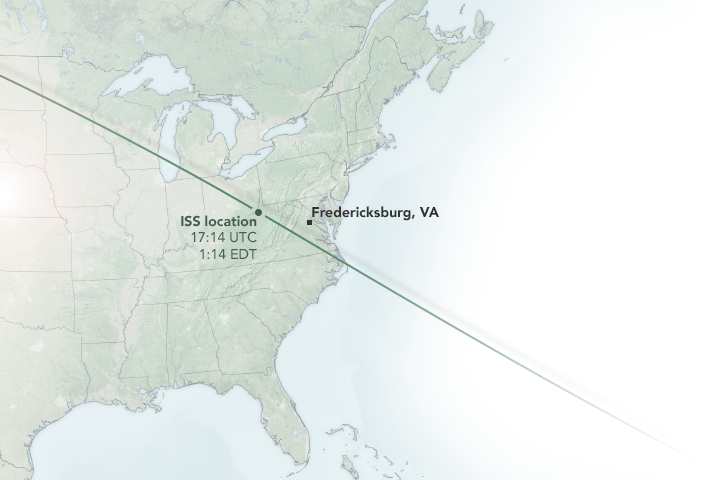

Moving at eight kilometers (five miles) per second, the International Space Station (ISS) circles our planet every 90 minutes. In a 24-hour period, crew members on the ISS experience 16 sunrises and sunsets. Despite how often the station passes directly between Earth and the Sun, capturing an image of the ISS transiting our nearest star is rare.
On June 24, 2020, NASA photographer Joel Kowsky captured such an occurrence from Fredericksburg, Virginia. The image above is a composite, made from six frames, and shows the ISS in silhouette as it moved from right to left across the solar disk while orbiting 400 kilometers (250 miles) above Earth.
The image below shows the position of the ISS in its orbit as Kowsky snapped his photos at approximately 1:15 p.m. U.S. Eastern Daylight Time. The transit lasted approximately 0.54 seconds and was captured while his camera was shooting at 10 frames per second. Watch a video of the transit here.

Kowsky says many websites help identify when the ISS will be transiting the Sun, but weather and timing are usually the main issues for shooting clear photos. "With a very limited path of visibility along the ground, having clear weather at the identified location is one of the most limiting factors in being able to capture a transit," said Kowsky, who had weather ruin a recent attempt. Proper safety equipment is also necessary when photographing the Sun, as looking directly at it can damage your eyes.
NASA has previously published images of the ISS crossing the Sun, including during the total solar eclipse in August 2017. Recent transit images have also shown a lack of sunspots as the Sun enters a period of low solar activity known as the solar minimum.
Photograph by NASA/Joel Kowsky. Earth Observatory map by Joshua Stevens. Story by Kasha Patel.